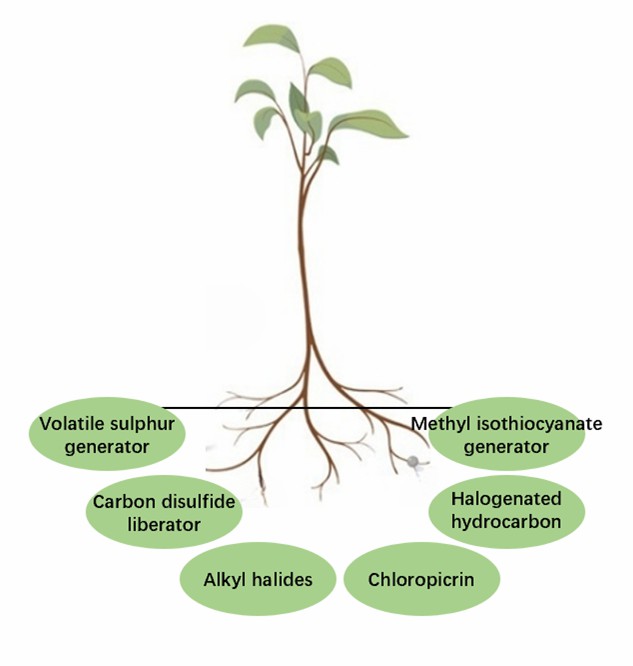Fumigant nematicide, which can also be called soil disinfectant, is a nematode multisite inhibitor. It is the earliest type of nematicide developed and applied. It may also be referred to as a soil disinfectant with the advantages of broad spectrum, high efficiency, low residue, and cost of use against soil nematodes. This type of nematicide is usually applied through an irrigation system or soil injection equipment before sowing or transplanting. It can kill a variety of pests such as plant nematodes, soil-borne diseases, underground pests, rodents, and weeds by volatilizing and spreading in the soil directly or after decomposition.
Lifeasible is a leading provider of comprehensive, high-quality services for plant sciences. We provide analysis for nematicide multi-location inhibition of nematodes to customers worldwide. We look forward to working with our customers to discover the secrets of life sciences.
 Fig.1 Schematic diagram of nematode-killing by multi-locus inhibition of fumigants.
Fig.1 Schematic diagram of nematode-killing by multi-locus inhibition of fumigants.
Lifeasible provides fast turnaround, high-quality services at competitive prices for customers worldwide. Our advanced technical platforms can help our clients solve the problems they may encounter in research based on years of experience. If you are interested in our services or have any questions, please feel free to contact us or make an online inquiry.
Lifeasible has established a one-stop service platform for plants. In addition to obtaining customized solutions for plant genetic engineering, customers can also conduct follow-up analysis and research on plants through our analysis platform. The analytical services we provide include but are not limited to the following:
STU-CRISPR System Improves Plant Genome Editing Efficiency
April 19, 2024
Application of Exosomes in Facial Beauty
April 12, 2024